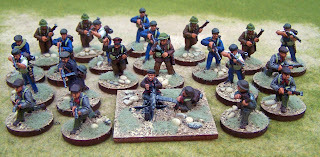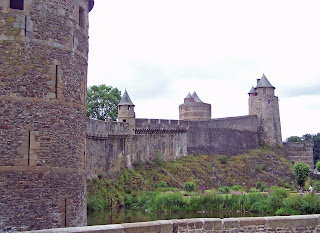Firstly, with 700pt WAB games to try out our 2011 WAB tournament rules. These appear to play well and I have selected three scenarios for the year with two games a session. My test games involved Bulgars v Vikings and provided several interesting encounters. Despite the production problems, WAB 2 plays well and the small point options give a quick and enjoyable game.
Secondly, I have been trying SAGA. For those not familiar with this new set of rules from Gripping Beast it covers the Viking Age and at present there are battle boards for Vikings, Anglo Danish, Normans and Welsh. A force can include Hearthguard or retainers, Warriors, Levies and the Warlord. You make up small 'armies' using a simple points system. No complicated army lists here.
 The game mechanics are simple with just four measurements and straightforward combat and shooting mechanisms. The more skilled the troop type, the more attack dice you get and the better the armour the more difficult to kill. The subtlety comes with the battle boards that control orders and special abilities. You roll special dice and allocate them to actions (rest, move, shoot) or abilities that strengthen your attacks or defence. It requires some planning to work out what you want to do and how your opponent is likely to respond.
The game mechanics are simple with just four measurements and straightforward combat and shooting mechanisms. The more skilled the troop type, the more attack dice you get and the better the armour the more difficult to kill. The subtlety comes with the battle boards that control orders and special abilities. You roll special dice and allocate them to actions (rest, move, shoot) or abilities that strengthen your attacks or defence. It requires some planning to work out what you want to do and how your opponent is likely to respond. Everything is clearly laid out in full colour with plenty of eye candy. Helpful summaries at the end of each section and plenty of worked examples. After just one game we were working off the quick reference sheet. But be warned, while the game mechanisms are simple, this is a lot more subtle than it at first appears and you really need to focus on the orders stage and make best use of the actions and abilities on your battleboard.
Overall I enjoyed these rules that allow a quick and fun evening game.
Normans catch a Viking raiding force!












































